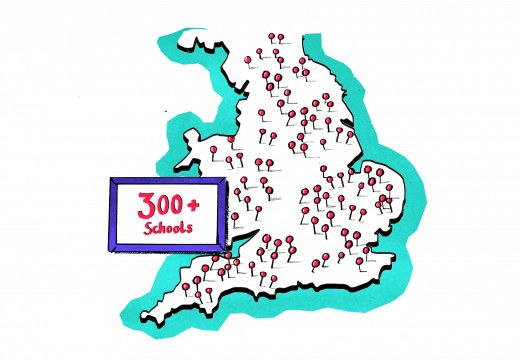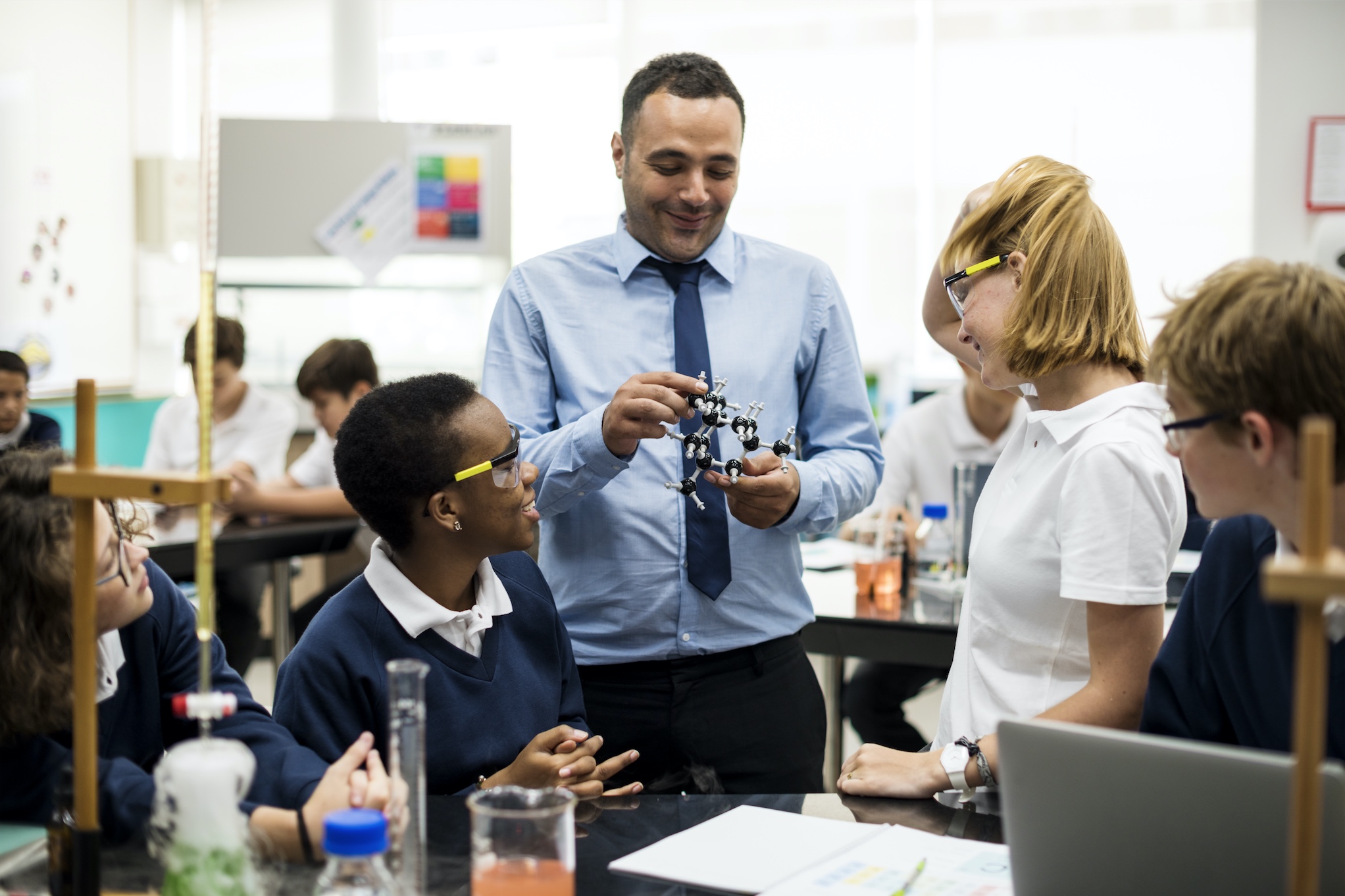Schools across the UK face lots of pressing challenges in their mission to provide the best education for every pupil. MyTutor has helped pupils in over 450 schools across the country with this aim, and our relationships with teachers have given us an invaluable awareness into the key challenges affecting our pupils’ success.
We partner with schools to develop one-to-one tuition programmes for their students, and these schools generally have a high percentage of students on Free School Meals (the government index for socially disadvantaged school kids). Sometimes the programmes are to help stretch their gifted students, but more often they’re in place to help disadvantaged kids raise their grades and boost their confidence. These schools frequently bear the scars of an education system under pressure, and by working together, we’ve learned lots about their resilience and commitment to their students. Here’s some of the main challenges they’re facing today, and how we’re trying to help.


MyTutor has partnered with over 300 schools since 2013
School funding
91% of schools are due to lose out under the government’s latest school funding proposals. They have already been cut by £2.8bn since 2015, and head teachers regularly speak about the impossible job they face to balance the books and offer a great education to all of their pupils. The cuts result in larger class sizes, loss of staff and fewer extra-curricular activities. Schools need to spend their reduced budgets more carefully than ever – and they need to see results.
As part of a broader strategy, one-to-one tuition helps increase the impact that an underfunded school is able to deliver for its pupils. A large pool of online tutors can be used to raise confidence, boost progress and reinforce the core classroom teaching.
Narrowing the attainment gap
Whilst the performance gap between pupils from advantaged and disadvantaged backgrounds has narrowed slightly (around 4%) over the past decade, it remains significant. Only 21% pupils from low-income families go to university, compared with 85% of pupils from private schools. A government strategy that addresses this is a fund called Pupil Premium, which is a total of £2.4 billion. This works out as £935 per child on Free School Meals per year, and schools are under a lot of pressure to ensure this leads to better exam results. Passes in English and Maths are valued more than the other subjects, as these tend to be the minimum requirements for school-leavers to get jobs or attend college. Despite schools’ best efforts, according to a recent BBC article, only 24% of pupils from the poorest backgrounds got good passes in English or Maths last year, compared to 50% of better-off kids.
At MyTutor, we’re committed to narrowing this gap too. A study by The Education Endowment Foundation showed that one-to-one tuition accelerated pupils’ progress by approximately five months in a school year. We’ve also found that with one term’s worth of MyTutor lessons a pupil will improve by a whole academic grade. By spending part of their Pupil Premium funding on lessons with our tutors, schools can provide disadvantaged pupils with valuable one-to-one support to boost their progress. We offer seven key school subjects, and because our tutors are all at top universities, they also make great mentors to pupils who may not know anyone else who’s gone to university.
Teacher shortage
Many schools are struggling to find enough teachers, particularly those outside major cities. Currently, 30% of new teachers leave the profession after five years, and that rises to 40% ten years in. Recruiting teachers for subjects such as Maths and the Sciences is especially difficult, and harder again for schools in rural regions. Even for those committed to staying in teaching, it’s a very challenging job. A working week of 55-60 hours is the norm, and particularly in the state system there is a copious amount of admin. As a result, many teachers are tired from the relentless stress and workload, which can drain them of the energy that they want to channel into their classroom teaching.
The experience gained by our tutors, all students at top universities, lets them see how they enjoy teaching and encourages them to consider it as a career option for once they graduate. We have a great cohort of ex-tutors who’ve gone on to become teachers at schools across the country. It’s a natural progression and one we hope to support more practically in the future. For teachers, as a result of set-aside tutoring time, some of the pressure is taken off, enabling them to maintain progress for more pupils.
Increased class sizes
The average class size in the UK state secondary schools is 21, and this can rise to more than 36 pupils in some schools. The larger the class, the harder it is for teachers to give personalised help for each pupil, or to differentiate for all abilities. Despite what’s best, a single teacher can’t be everywhere. One-to-one tuition helps to supplement the time a teacher is able to give to each pupil. Any questions that pupils may have been too shy to ask in class, or a topic that they couldn’t grasp at the pace of teaching can be looked over and resolved in the personal setting of our online classroom.


Online tuition supports classroom teaching by giving pupils extra one-to-one support
Government initiatives
As well as the online tuition service that MyTutor provides, schools use several government initiatives to attempt to address these challenges.
To tackle the difficulty with teacher recruitment, a new strategy called the Early Career Framework aims to recruit 30,000 new teachers a year and give extra support to the 450,000 current ones. Championing new and veteran teaching talent, facilitating more job-shares and simplifying the application process are some of the ways they’ll try to achieve that.
Geared towards addressing the attainment gap is a new school ranking system called Progress 8. Started in 2017, this is a system that ranks schools by measuring pupils’ progress from the end of primary school to the end of secondary school, instead of just by exam results. It’s caused some controversy with teachers who claim it encourages them to focus more on higher achieving pupils than those who struggle. This is because the final ranking also takes into account pupils’ attainment – the school will get more points if the pupil improves from a 7 grade to a 9, for example, than from a 2 to a 3. That said, by making it clearer which schools need some more help, the government should be able to better allocate resources.
Another system in place with the view to tackling both teacher recruitment and the attainment gap is a fantastic initiative called TeachFirst. Started in 2002, it’s a charity that works directly with the government, providing top university graduates with a two-year teacher training programme where they work in schools that are particularly struggling. Working from the central ethos of improving educational equality across the UK, by filling teaching posts in under-supported parts of the country, they help boost the nationwide teaching standard and balance out some of the geographical attainment gap.
Like these initiatives, we’re dedicated to helping as many pupils in the UK as we can. Whether it’s help recruiting teachers, enabling higher-impact interventions, supporting big mixed-ability classes, or boosting pupil confidence, we believe there’s lots of ways that online tuition can help schools.
Our mission is to partner with 1,000 schools by 2021 to support their teaching and help kids reach their full potential in their exams and in life.
Written by James Grant, MyTutor Co-Founder & Managing Director, Schools




